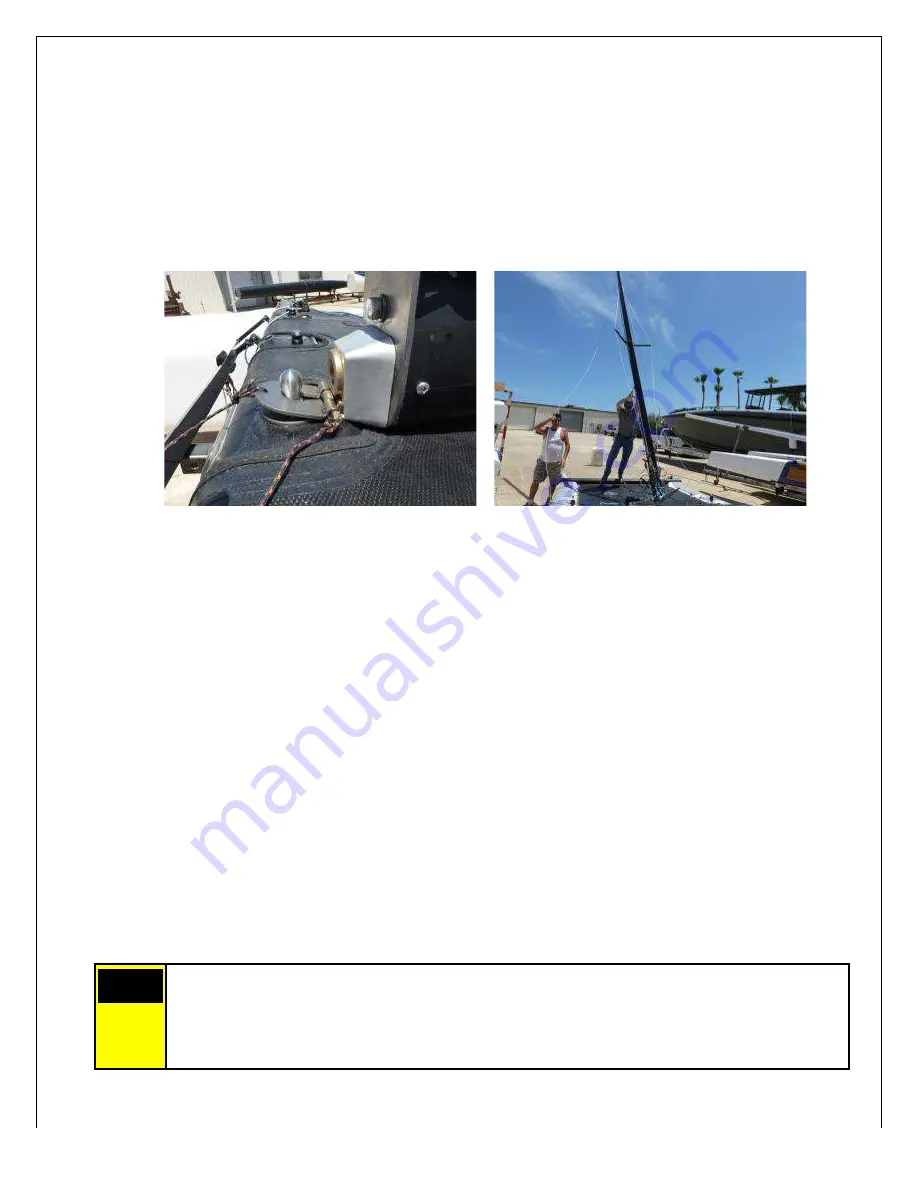
One person should stand on the tramp at the rear beam. The second person
should walk the mast up to the person standing on the tramp. They should then
raise the mast to their shoulders and walk forward extending their arms pushing the
mast into a vertical position with tension on the shrouds. At this point rotate the
mast 180 degrees back to a normal position and continue to hold the mast forward.
While keeping pressure on the mast, hand the forestay to the second person and
thread the forestay stud end into the calibrated turn buckle located on the top of the
diamond wire assembly.
The rig can be tightened either from the side stays or the forestay turnbuckles. A
starting point for mast rake should be approximately half way between the
gudgeons using the trap wire measuring method. When tightening the rig make
sure the 2 side stays are set at the same setting. Rig tension should be brought to
approximately 200 lbs. See tuning manual for the most accurate recommended
setting for the conditions. It is very important the there be adequate tension in the
rig before continuing the rigging process. Never attempt to sail with a loose rig.
The mast should be located somewhere from true vertical to slightly angled aft.
This is a tuning adjustment and will vary with sail cut, personal preference, weight
and sailing conditions.
To set the mast rake using the trap wire method; detach one trap wire assembly
once the rig is set and tight. Walk the trap wire forward and hold the attachment
line against the bridal tang fitting. Keeping this point on the line marked and held,
then walk the trap wire to the rear of the boat making sure you clear all of the mast
and rigging. Hold the trap wire to the hull aft and note where the marked point of
the line intersects the hull along its center line. This point should be relatively close
to half way down the transom as a rough starting point.
Caution: Ensure there is adequate tension in your rig before continuing.
Raising sails or sailing with a loose rig can cause the mast to separate from
the mast step and the rig to come down. Lose standing rigging can cause
other systems to become overloaded and fail during use.
Caution
















































